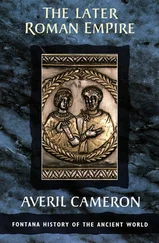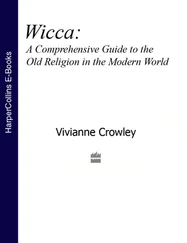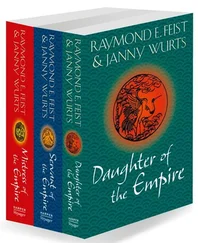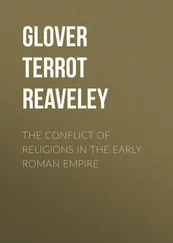1 ...8 9 10 12 13 14 ...27 The empire was not entirely a closed religious world. Almost no Roman citizens settled beyond the Roman frontiers, and many diasporas were in effect confined by imperial borders. Artefacts travelled further. Religious statuettes of Roman origin are occasionally found north of the Rhine and even in Denmark, but it does not look as if they were used in similar ways there. The same is true of the motifs on silver found in Scotland. To the south there was a barrier of a different kind, one formed by desert and high mountains, with just limited connections through the Nile Valley and the Red Sea. Some Roman objects and images found their way to Nubia or to the oases of the Garamantes and perhaps some religious ideas travelled with them.
Yet to the east—in Anatolia, Syria and Mesopotamia—successive Romano-Persian frontiers bisected a zone which had had a common religious history for millennia. Religious networks of various kinds straddled those frontiers. The Jewish diaspora spread well into what is now Iran and had major centres in Mesopotamia. There were Christian communities in Armenia and in the Persian Empire before Constantine’s conversion. The Manichees in the third century AD had adherents from what is now Tunisia through Egypt, Mesopotamia and Iran to India. These networks rested on older foundations. Zoroastrian ideas were well known throughout the Near East and by some Greeks as well. A whole series of religious exchanges and borrowings characterised this region from the Hellenistic period on. The cities of Phoenicia on what is now the Levantine coast, display a deeply sedimented religious history in which Roman and Greek forms of cult are built on and out of earlier traditions stretching back to the second millennium BC. 47
A century ago this ›open frontier‹ to the east played an important part in religious history, and it was argued that most of the religious developments that can be seen from the second century AD, could be explained in terms of the arrival of so-called oriental religions from beyond the empire. 48The worship of Cybele, Isis, Mithras, the Syrian gods and several others were grouped together as being less civic, more emotional, and more mystical than the more formal and less personal religious traditions of Greek and Roman city-states. This picture no longer looks convincing and has been criticised from several standpoints. 49Not only are we more aware of the differences between all these traditions—in terms of rituals, of representations, in their points of origin and also in the chronology of their appearance—but it is certain that most originated within the boundaries of the Roman Empire. At best we can say there are links between their initial movement and the movement of particular groups of people—Syrian soldiers serving in the Rhineland, Egyptian traders in the Aegean and so on—and that one thing that made some diasporic cults attractive to others was the idea of a particular place of origin, real or imagined (Artemis of Ephesos, Isis of Egypt, Jupiter of Doliche, Christ and the Holy Land, Mithras and Persia). 50
The network of cities, routes and diasporic populations that connected the Mediterranean to central Asia and India via Syria, Mesopotamia, Iran and by a different route via the Red Sea, allowed religious transfers in more than one direction. This too can be traced back at least to the last millennium BC and the empires of the Assyrians and Persians before those of Macedonians and Romans. Gandharan art is now widely understood as reflecting contacts with Mediterranean traditions. Greek ideas, including about the divine, met Buddhist thought in Bactria and elswhere.
It is presumably the fact that to the north and south these networks involved populations which did not have forms of urbanism and political culture similar to those of the Mediterranean world, that explains the particular energy of religious transfers east and west. Consider for example the group of twelve or more huge metal cauldrons, deliberately broken and buried in a pit beside a route linking two Iron Age hillforts which was found at Chisledon in southern Britain in 2005 along with the skulls of two cattle and other material that may represent the remains of a feast. 51The disposal of metal, which could easily have been reused, represents a major expenditure of wealth, comparable to large scale animal sacrifice in the classical world or the construction of a new temple. But although we can see those analogies, the gap between this ritual and those to which Romans were accustomed perhaps made it impossible to incorporate this sort of ritual into the worship of a Mediterranean deity.
Connections between the eastern Mediterranean, Anatolia, the Levant and beyond that the Iranian plateau had existed since the Bronze Age. Achaemenid rule had provided a different imperial space through which the alphabet, coinage, and sculptural traditions depicting humans, animals and gods flowed back and forth. Those existing connections, enhanced by the growth of cities and road networks, and the spread of diasporic populations of Greeks, Jews and Syrians among others, provided an infrastructure across which religious ideas and symbols could also flow. 52
One contemporary of the emperor Decius, with whom we began, was the prophet Mani, born in the disputed frontier region of Mesopotamia in a period in which it was ruled by the Persians. 53A religious innovator he combined elements of Jewish and Christian thought with traditions drawn from Zoroastrianism and produced a series of sacred texts written in Aramaic, the lingua franca of the Roman and Persian Near East for centuries. Sacred texts were another newish religious technology, one that had spread from one religion to another. Mani did not only draw on an eclectic range of influences, he also tried to mobilize authority from several traditions, apparently claiming to be an apostle of Jesus Christ and a successor of the Buddha. Some passages of his writing drawn on Jewish Apocalyptic literature like the Book of Enoch . The dualism of his cosmology reflects the same Zoroastrian background that had been appropriated centuries before by the creators of Mithraism. After his death, probably in the 270s AD, Mani’s teachings spread west and east and at least some of his followers adopted Manichaean as an exclusive identity. Persecuted in late antiquity by Persian and Roman emperors and in the eighth by Abbasid Caliphs and Chinese emperors, it has left behind texts from all over central Asia written in a bewildering variety of languages. Unsurprisingly Manichaean practice adapted to local circumstances across its vast range. The same was partly true of the worship of Isis and of Mithras, both of which had become widespread within the empire, and certainly true of Christianity. Yet what one individual was able to make through the bricolage of elements from so many sources, something that could resonate in local societies from Carthage to Samarkand and beyond gives some sense of the interconnectedness of that world. Shifting and overlapping imperial spaces, diasporic populations, and interlocking networks of roads and seaways provided the hardware across which religious innovations flickered back and forth, most lost within a year or two, but just a few enjoying spectacular success. The religious life of Rome and its empire, straddling the western third of this broad Eurasian network, cannot be understood in isolation.
Mani provides an example of a kind of religious entrepreneurism that became more common, or at least more successful in terms of attracting adherents, over the first centuries AD.
Earlier religious innovators certainly existed. It is difficult to imagine any other origin for the cult of Mithras as we know it in the Roman West, apart from a single invention by a founding group. 54That group had some knowledge of Iranian and Syrian traditions about the god that we can trace back to the Bronze Age via the Achaemenid Empire. They also knew something about Greek mystery cults, and their central rituals seem to have been formed in dialogue with Roman ritual traditions. At some point, probably in the late first century AD, a new synthesis was created with a new iconography and temple form and it was widely imitated or disseminated throughout the west before local variants appeared and the cult became less and less distinctive. Roman Mithras had some unusual features—apparently worshipped mainly by men for example—but he did not demand exclusive adherence, and relationships were established with other deities over time. Why no founder’s name was attached to this is impossible to say.
Читать дальше












